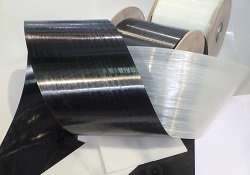Making cars and planes lighter and cleaner using unidirectional fibre tapes

An EU initiative has developed a cost-effective way to produce unidirectional (UD) tape to manufacture and reinforce parts in cars and planes. The solution will make them lighter and more environmentally sound.
Automobiles are among the biggest culprits in generating greenhouse emissions, raising the costs for both the environment and manufacturers. One solution is to make vehicles lighter by using new materials such as UD fibre tapes. However, until now these tapes were costly and difficult to produce in sizeable quantities.
To address this issue, the EU-funded FORTAPE grouped 10 partners from 5 European countries covering the entire value chain. The broad range of stakeholders was needed in developing new integrated technologies with the most efficient use of materials and energy. This was done to adapt UD tapes for use in vehicles and aeroplanes.
UD tapes can be used to enhance the mechanical properties of a plastic part. They can also be used to manufacture structural parts, consolidating and thermoforming several layers.
Barriers to extensive use
But, this new high-performance material comes with some obstacles to widespread use in industry, says project coordinator Raquel Ledo Bañobre. The main hurdles are high consumption of resources, lower rates of automation, high production of defective materials and the subsequent rise in manufacturing costs.
"In global terms, industry needs to reduce vehicle weight in order to lessen greenhouse emissions and fulfil EU requirements using a cost-efficient solution," she adds. "Despite their huge mechanical properties and lightweight potential, there were several issues that needed to be addressed to guarantee their extensive use in the industry."
The project focused on three main axes: tapes manufacturing, part manufacturing, and the modelling of processes and parts. Three different technologies for fibre impregnation were researched to develop the innovative process in manufacturing UD carbon and glass fibre tapes with increased fibre content.
Drastically reducing price
FORTAPE was able to optimise the manufacturing process to produce 16 tapes at a time at the right width. This helped to considerably slash the tape price.
Another output was an automated method to use UD tapes as reinforcement for a window regulator. This will help to meet cycle times and production volume needs for the auto industry. A window frame manufacturing process using fireproof polyamide UD tapes was developed for the aeronautical sector.
Also developed was a comprehensive model of the UD tapes as reinforcement to predict the mechanical properties of the part and the injection moulding process. Both aspects are key to introducing new materials in the automotive sector.
The most significant achievement is energy and material savings. FORTAPE was able to beat all targets on material savings. The goal for aeronautics parts was originally set at 75 percent, and reached nearly 92 percent. Similarly, the savings for automotive parts reached almost 57 percent from 40 percent initially. The project matched all but one target for energy savings. All EU requirements were fulfilled.
The technical and economic feasibility of the processes have been successfully demonstrated. To achieve industrial implementation, new adjustments and optimisations will be required. Bañobre says the plan is to continue to explore the possibilities of maturing the innovation and bringing it to the market.
"The reduction achieved in terms of material and energy consumption will enable companies to decrease their manufacturing costs and reduce the environmental impact," she concludes.
Provided by CORDIS



















